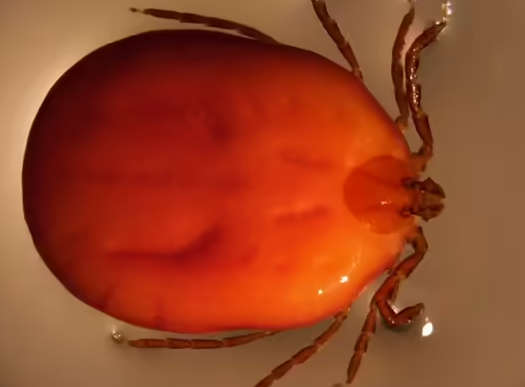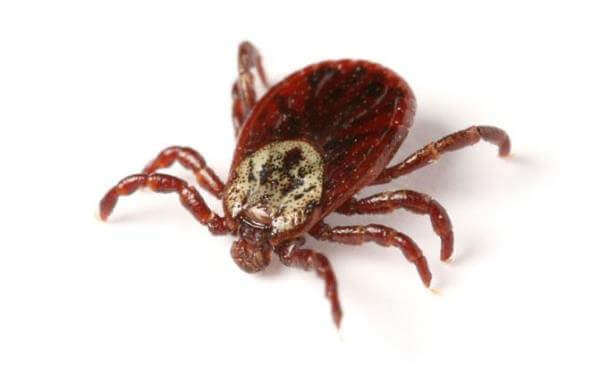
The invasive Asian longhorned tick (Haemaphysalis longicornis) was recently detected in a new county in Illinois, representing the third county in which it has been found following its first detection in 2024.
The detection was a result of a community-engaged program focused on tracking the range expansions and potential introductions of invasive tick species by soliciting ticks from the public, as well as working with livestock producers to collect ticks from farm animals.
Clay County cattle brought to the Marion County collection station were inspected for ticks. All collected ticks were initially identified at the INHS Medical Entomology Lab. Suspected H. longicornis ticks were sent to the USDA National Veterinary Services Laboratory for confirmation. Ticks collected from Clay County cattle included adult female H. longicornis. Sale and subsequent movement of cattle from farm to farm, whether between counties or states, is common. These detections highlight the role of such movement in the potential spread of this invasive tick species, as well as the importance of surveillance through community-engaged efforts in a shared One Health approach.
“The discovery of the invasive tick in another county shows that the pest is on the move across the state,” says Teresa Steckler, commercial agriculture specialist with University of Illinois Extension. "It’s important for everyone to do what they can to continually increase protection from tick bites in their own spaces, whether it be when spending time outside or caring for livestock.”
Asian longhorned ticks are of particular concern for livestock producers. It is parthenogenetic, or able to reproduce asexually, which facilitates introductions to new environments and allows for rapid increases in local population sizes. Its biting on infested livestock can lead to reduced growth and cause significant blood loss. It is capable of transmitting Theileria orientalis, a tick-borne protozoan. Native genotypes of T. orientalis in the United States are usually nonpathogenic; however, the virulent T. orientalis Ikeda genotype infects red blood cells and causes bovine infectious anemia. Clinical signs of theileriosis are similar to anaplasmosis in cattle and include anemia, jaundice, and weakness. The Ikeda genotype has been detected in 19 states, including Iowa, Missouri, Indiana, and Kentucky.
If you find a tick attached to an animal or a person, remove it immediately, using tweezers to grasp the tick as close to the skin as possible and pull gently. Wash the affected area with soap and water.


 Lawrence County arrests
Lawrence County arrests
 Illinois drought monitor says dry conditions to continue
Illinois drought monitor says dry conditions to continue
 Lawrence Co. meat processors working with Hunters Feeding Illinois
Lawrence Co. meat processors working with Hunters Feeding Illinois
 State agencies call for harvest safety amid drought conditions in Illinois
State agencies call for harvest safety amid drought conditions in Illinois
 Lawrence County issues another burn ban
Lawrence County issues another burn ban
 Southeastern Illinois man identified as victim in Knox County fatal accident
Southeastern Illinois man identified as victim in Knox County fatal accident
 Charge upgraded in Bridgeport domestic case
Charge upgraded in Bridgeport domestic case
 Driver dies in Knox County crash
Driver dies in Knox County crash
 USDA issues second Economic Assistance Payment to agricultural producers
USDA issues second Economic Assistance Payment to agricultural producers
 Three sent to prison in Lawrence County
Three sent to prison in Lawrence County
 Bridgeport man charged after domestic incident
Bridgeport man charged after domestic incident
 Vincennes shooting incident
Vincennes shooting incident
 Lawrenceville arrest
Lawrenceville arrest
 Bailey officially to run for Illinois governor again
Bailey officially to run for Illinois governor again
 Red Hill Unit #10 passes 2026 budget
Red Hill Unit #10 passes 2026 budget
 Southwestern Illinois authorities on lookout for fugitive
Southwestern Illinois authorities on lookout for fugitive
 State health department warns of ticks, Powassan
State health department warns of ticks, Powassan




